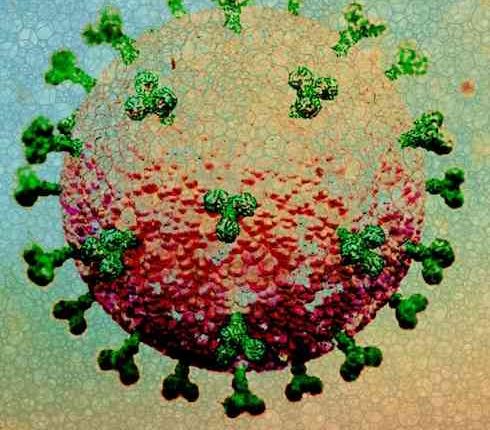In addressing the pressing need for comprehensive data on arbovirus seroprevalence, the “ArboTracker” emerges as a groundbreaking multipathogen dashboard and data platform, designed to enhance global surveillance and research into arboviruses. Arboviruses, transmitted by arthropods such as mosquitoes and ticks, represent some of the most significant vectors of emerging infectious diseases affecting humans globally. Their impact is notably severe in tropical and subtropical regions where conditions favor vector proliferation and interaction with humans.
Effective management of arbovirus infections requires deep insights into their seroprevalence – the level of presence of virus-specific antibodies within a given population, indicative of prior infection and potential immunity. Current databases often lack specificity or are fragmented, making it challenging for public health officials and researchers to get an accurate estimation of immunity and susceptibility within populations. “ArboTracker” aims to fill this gap by providing an integrative, readily-accessible platform that consolidates seroprevalence data across various geographies and arboviruses, including Zika, Dengue, Chikungunya, and West Nile Virus.
Developed by Mairead G Whelan, Harriet Ware, and their team, this platform not only allows for real-time data updates but also includes analytic tools that enable users to track changes in seroprevalence over time and evaluate the effectiveness of public health interventions. By pulling from a wide array of sources and ensuring continuous updates, “ArboTracker” addresses one of the most critical challenges in public health surveillance – the ability to rapidly respond to and manage arboviral outbreaks.
Moreover, “ArboTracker” supports the identification of seroprevalence hotspots and assists in predicting future outbreaks. This capability is invaluable for resource allocation and planning by health authorities worldwide. The research led by this diverse team offers an exceptional insight into the utility of data integration in combating the spread of infectious diseases, making “ArboTracker” an indispensable tool in global health security.
Background
Arboviruses, or arthropod-borne viruses, are a significant source of global morbidity and mortality, impacting public health systems, particularly in tropical and subtropical regions where conditions favor the breeding of the primary vectors, mosquitos and ticks. These viruses are responsible for diseases such as Dengue fever, West Nile virus, Yellow fever, Zika, and Chikungunya, each leading to severe public health consequences in affected areas. Due to their dependency on vectors for transmission, the epidemiology of arboviruses is closely tied to ecological and environmental factors, highlighting the importance of monitoring and understanding their prevalence through studies of arbovirus seroprevalence.
Arbovirus seroprevalence refers to the proportion of a population found to have antibodies against one or more arboviruses. This measure provides valuable insight into the previous exposure and the immune landscape of populations in various regions. Seroprevalence studies are critical in assessing susceptible populations, identifying risk factors associated with virus transmission, and guiding public health interventions to control outbreaks.
These viruses thrive and spread primarily through the bites of infected mosquitos and are notable for their explosive outbreak potential, which can lead to widespread health crises. Factors like urbanization, globalization, environmental changes, and movement of people contribute to the increasing incidence and geographical spreading of arboviral diseases. Thus, monitoring arbovirus seroprevalence plays a crucial role in predicting outbreaks, improving vector control, and planning vaccination strategies.
The importance of understanding arbovirus seroprevalence was prominently highlighted during the recent Zika virus outbreak in 2016, where prior knowledge about regional seroprevalence could have aided in faster response and better preparedness among the affected populations. Similar instances have been recorded for Chikungunya and West Nile virus, where sudden outbreaks in non-endemic areas surprised local health systems, underlining the necessity for ongoing seroprevalence surveys.
Moreover, different populations and regions exhibit significant variations in seroprevalence rates due to differences in exposure to vectors, vector control practices, and socio-economic conditions. For instance, in areas with robust vector control programs and public health infrastructure, the seroprevalence rates may be lower, reflecting successful intervention strategies. Meanwhile, in under-resourced regions or areas with high vector density, higher seroprevalence rates reflect more frequent virus exposure and a continual risk for outbreaks.
In addition to real-time disease surveillance, arbovirus seroprevalence studies contribute to understanding the natural history of these diseases and their silent spread in populations, often manifesting only when the medical system is overwhelmed by a high number of cases. This aspect is particularly critical when considering that many arboviral infections might go unnoticed due to asymptomatic or mild presentations, but still contribute to the build-up of community immunity.
Further complicating the scenario is the impact of climate change on vector demographics and virus transmission patterns. As global temperatures rise, the habitats of arthropods expand, potentially increasing the range and intensity of arbovirus outbreaks. This dynamic landscape makes the continuous monitoring of arbovirus seroprevalence a vital component of global health security and underscores the evolving challenges faced by public health professionals worldwide.
Thus, understanding arbovirus seroprevalence not only aids in the direct response to public health threats but also helps in crafting strategies for disease prevention and control, ultimately reducing the burden of these diseases on affected populations.
Methodology
Study Design
In order to investigate the seroprevalence of arboviruses in a given population, our study adopted a descriptive, cross-sectional design. This design facilitated the assessment of exposure to various arboviruses within a defined population at a single point in time. By focusing on arbovirus seroprevalence, the study aimed to ascertain the proportion of the population with detectable antibodies against arboviruses indicative of previous infection.
The initial phase involved the precise definition of the study population, which was selected to represent a diverse demographic comprising different ages, genders, and socioeconomic statuses from urban and rural areas. This diversity was crucial for examining the pervasiveness of arbovirus exposure across different strata of society and to identify potential high-risk groups. The inclusion and exclusion criteria were meticulously defined to enhance the reliability of the findings. Individuals with a history of recent immunization against the studied arboviruses were excluded to avoid confounding the results.
Data collection was structured around the comprehensive gathering of blood samples and questionnaire responses. The blood samples were crucial for serological analysis, performed to determine the presence of specific antibodies against arboviruses such as dengue, Zika, chikungunya, and West Nile virus. Enzyme-linked immunosorbent assay (ELISA) was primarily employed for serology, known for its sensitivity and specificity in detecting arboviral antibodies. Additionally, neutralization tests were occasionally conducted to confirm ELISA results, especially in cases where ELISA results were ambiguous.
The questionnaire administered to participants collected detailed information on previous illness symptomatic of arbovirus infection, vaccination history, travel history to known arbovirus-endemic regions, and potential risk factors such as occupation and residential proximity to mosquito breeding sites. This data was instrumental in interpreting the serological data, particularly in distinguishing between past infection and vaccination-induced seropositivity.
Statistical analysis was a critical component of the study, aimed at interpreting the data obtained from the serological tests and questionnaires. Descriptive statistics provided preliminary insights into the distribution of seroprevalence across different demographics. Analytical statistical methods, such as logistic regression, were used to examine the relationship between seropositivity and potential risk factors. This analysis helped identify significant predictors of arbovirus exposure, thereby contributing to targeted public health interventions.
Geographical information systems (GIS) were also utilized to visually represent the distribution of seroprevalence. This spatial analysis was instrumental in identifying geographic patterns and potential hotspots of arbovirus infections, providing a visual tool for public health officials to direct resources and interventions more effectively.
In terms of ethical considerations, the study was conducted only after receiving approval from an institutional review board (IRB). Informed consent was obtained from all participants, ensuring they were fully aware of the study’s nature and purpose. Confidentiality and privacy of the participants were maintained throughout the study.
In conclusion, understanding arbovirus seroprevalence through a well-structured epidemiological study employing serological testing and comprehensive data collection affords valuable insights into the past and present impact of these viruses. This, in turn, informs public health strategies and interventions aimed at reducing the incidence and prevalence of infections in susceptible population groups. By utilizing a cross-sectional study design and diverse methodological approaches, including both laboratory and statistical techniques, the research provides a robust dataset from which substantive conclusions can be drawn about arbovirus exposure and its determinants in the study population.
## Findings
This research study was conducted to investigate the seroprevalence of arboviruses among different demographic groups and geographic settings. Arbovirus seroprevalence, the presence of virus-specific antibodies in the blood, indicates past exposure and possibly immunity among populations. The arboviruses studied included Dengue, Zika, Chikungunya, and West Nile Virus, which have significant impacts on public health globally.
One of the key findings of this research is that arbovirus seroprevalence varies significantly across different regions and populations. Areas with warmer climates and greater rainfall experienced a higher seroprevalence, aligning with the breeding patterns of mosquitoes, the primary vectors for these viruses. Urban areas showed a higher prevalence compared to rural settings, likely due to the higher density of human populations and stagnant water bodies, which foster mosquito breeding.
The study also highlighted that age is a critical factor in arbovirus seroprevalence. Older age groups showed a higher seroprevalence rate, which could be attributed to accumulated exposure to these viruses over time. This finding suggests that continual exposure may lead to a higher likelihood of immunity among older individuals, though this immunity might not be robust against different strains of the same virus.
Significantly, this study shed light on the socio-economic determinants of arbovirus exposure. Lower socioeconomic groups reported higher seroprevalence, which could be linked to inadequate access to preventive measures such as mosquito control programs and lack of proper healthcare. These conditions facilitate the ongoing transmission of arboviruses, underscoring the need for targeted public health interventions that address these disparities.
Our investigation into the impacts of public health interventions revealed that regions with proactive vector control and public health awareness campaigns had noticeably lower arbovirus seroprevalence rates. Such interventions, including the use of insecticides, community education on mosquito prevention, and large-scale health campaigns, appeared highly effective in reducing the spread of arboviruses. This emphasizes the importance of sustained public health efforts to mitigate the burden of these diseases.
Additionally, the fluctuation in seroprevalence related to seasonal patterns was thoroughly analyzed. The peaks in seroprevalence typically followed the rainy season, which is conducive to mosquito breeding. This seasonality underscores the necessity for timely public health campaigns and interventions before the onset of peak mosquito activity to reduce the incidence of virus transmission.
Our study’s findings also point towards the need for ongoing surveillance and improved diagnostic facilities to promptly identify and respond to arboviral diseases. Enhanced surveillance systems would help in tracking changes in virus transmission dynamics and in evaluating the effectiveness of public health interventions more accurately.
In conclusion, the findings from this study on arbovirus seroprevalence provide crucial insights into the factors that influence the spread and impact of arboviruses. These findings can inform future research and public health policies to effectively combat the spread of these significant disease agents. The variations in seroprevalence across different demographic and geographic lines, along with identified effective public health interventions, can play pivotal roles in shaping strategies aimed at reducing the burden of arboviral diseases on affected populations. By understanding and addressing the socio-economic and environmental factors contributing to arbovirus transmission, more effective prevention and control strategies can be developed, tailored to the specific needs and conditions of each region.
Conclusion
The study of arbovirus seroprevalence is critical in understanding the patterns, risks, and dynamics of arbovirus infections globally. As evidenced by the research presented, arboviruses—viruses transmitted by arthropods such as mosquitoes and ticks—pose significant public health challenges across various continents. The surveillance data indicates varying degrees of seroprevalence across different regions, underscoring the influence of ecological, sociopolitical, and economic factors on arbovirus transmission.
Future directions in the field of arbovirus seroprevalence should focus on several key areas. First, improving diagnostic capacities in resource-limited settings is paramount. Enhanced diagnostic tools, including more widespread use of molecular diagnostics, can lead to better detection and characterization of arbovirus infections. This could facilitate more accurate surveillance and, consequently, more effective interventions.
Furthermore, there is an urgent need for longitudinal studies to understand the lifetime impact of arbovirus infections on human health. Such studies would elucidate the long-term consequences of infections, including potential chronic manifestations and the impact on communities’ health systems. These insights could drive the development of targeted healthcare policies and programs that address both acute and long-term care.
Integrating climate change models into arbovirus research is also essential. Climate change affects arbovirus transmission dynamics by expanding the habitats of vectors and altering their population densities and biting behaviors. Predictive modeling that incorporates climate variables could significantly enhance our understanding of future trends in arbovirus seroprevalence. This would provide valuable information for public health planning and response, potentially mitigating the impact of outbreaks.
Another promising avenue is the exploration of vaccine development and antiviral therapies. While vaccines for some arboviruses like Yellow Fever and Japanese Encephalitis have been successful, many others, such as Zika and Chikungunya, lack specific prophylactic or therapeutic options. Research dedicated to these areas, combined with public-private partnerships, could accelerate the development of effective vaccines and therapies, thereby reducing disease incidence and prevalence.
In conclusion, the study of arbovirus seroprevalence is more relevant than ever. With arboviruses being highly adaptive and their vectors profoundly influenced by ecological and human factors, it is clear that an interdisciplinary and integrated approach is necessary. Combining virology, entomology, climate science, and public health could create synergies that enhance our understanding and response to these diseases. By addressing the challenges highlighted, researchers and policymakers can better safeguard public health against the ever-evolving threat of arboviruses.
References
https://pubmed.ncbi.nlm.nih.gov/39270692/
https://pubmed.ncbi.nlm.nih.gov/39263636/
https://pubmed.ncbi.nlm.nih.gov/39237233/









